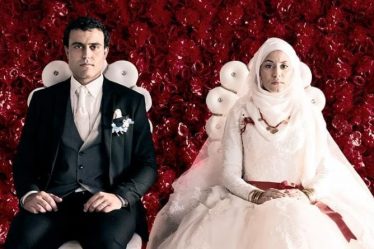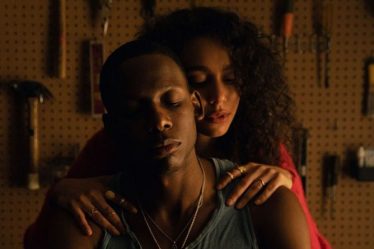

There’s something I find beautiful about Director Greg MacGillivray of MacGillivray Freeman Films. As memorial, he includes founding partner Jim Freeman, who was killed in a 1976 helicopter crash, as part of the company’s name. Speaking to him on the phone, you’d never know MacGillivray is 72 years old. He has the kind of unfettered excitement and enthusiasm you’d ascribe to a 25 year old. It’s no wonder, since he has a career he essentially invented for himself, which is entirely fed by his imagination and curiosity. Nominated two times for an Oscar for The Living Sea and Dolphins, his now-classic 1976 film To Fly is still playing in IMAX theaters across the country, To Fly is included in the National Film Registry as one of the 150 significant films in 100 years of American cinema.
MacGillivray was definitely inspired by his new project, Dream Big. Opening in theaters around the country this weekend, he talked about why it’s a perfectly timed film, and how he translated the desire to feature the importance of engineering through an IMAX film:
“The idea here is that we don’t have enough American engineers. They aren’t graduating enough engineers in the universities here in the states. Companies like Bechtel need more engineers. Because only 10% of working engineers are women, were focusing on women and young girls, trying to get them to consider a career in engineering. It’s a great field to go into, but people don’t know enough about it. There aren’t any TV shows about it. The communication about what an engineer does on a day to day basis is very low and so we decided to tell the story of four people, three women and one man, how and why they became engineers and why they like it so much.
Then we had to make it an IMAX film in 3D which means we have to tell stories that are visual and beautiful and in locations that everyone wants to go to and that was our challenge in creating this film. We went all over the world, because there are beautiful buildings, important structures, and construction everywhere, including The Great Wall of China, which is the biggest man-made structure ever. I wanted to show the audiences these places that are so magnificent, and how engineers have changed them for the better and the safer. One of the roles of an engineer is to make buildings safer so that don’t succumb to an earthquake or die in a building that falls down, or drown in a river that needs a bridge across it. It was just really fun to spend the time we spent in finding these stories. The research was immense, but very rewarding.”
In other fields, there is an appalling difference between the women in school and those who are in the industry. In animation, where there are several universities where more than 60% are women, only make up 20% of the industry. The odds are better in engineering, but they are still only 50% of the workforce. MacGillivray mentions how they approached appealing to more women, and to American kids in general.
“There’s still something dissuading or keeping about half the female graduates from a career. So what we’re showing is the variety of what can happen as an engineer and the kind of teamwork involved. Just about everyone loves to work on a team. Dream Big also shows its positive challenges like travel and designing things that are going to be keeping people safe all over the world. I think Americans are very well-suited to engineering as a culture. We don’t really fear failure like other places in the world. We almost love to risk and design things that are more creative and weird. If they fail, we accept it and move on. Elsewhere in the world, that kind of failure is a huge problem and seen very badly. In the US, it’s often just taken as part of the process.”
More and more forms of engineering are needed, and more than ever, to combat global warming, build smart cities to handle increased population. The trick, it seems, is to get as many kids, especially, as MacGillivray mentions, American kids, to get engaged in and curious about the engineering field, because he believes we are particularly suited to it:
“The goal of our film is to get young film of junior high and high school interested in this wonderful field of engineering. The artful side is a really important side. Nowadays you don’t have to be a math genius to become an engineer. What the engineering field needs is those who are creative. One of the reasons the iPhone is so successful is because an artist worked on them to make them more beautiful and more usable to a human being. It wasn’t a science-focused person who worked that out, it was an art-focused person. Anyone can go into engineering today and make a success of it. The fact that it’s important to our American culture and our business leadership around the world is really important to me, and most everyone in our country. We have a leading edge with our engineering and design skills, but we have to maintain that. Manufacturing jobs are diminishing, because our wages are higher than elsewhere in the world, but in the case of engineering, we’re creative types. We don’t fear failure, so we’re able to design things, and engineer things, that are more advanced. That’s our angle, and that’s how we can compete in the international marketplace.”
MacGillivray has many partnerships with companies in bringing his films to the screen, all of whom have mission statements about inclusion and acceptance. He himself believes it takes of all kinds of people to make the most successful problem-solving and inventive teams.
“In my opinion, what i’ve seen in my life, is that the diversity of our country is one of our richest factors. The fact that we have different cultures, different languages, and different ways of thinking all melting together as one so when we’re working together on a team and you have a diverse group of people gender-wise and race-wise and ethnicity-wise, from different parts of the world, you have greater strength. You have greater imagination and you have greater chances to find solutions to a problem. Not all the time will the first solution will the right one, but you need that kind of freedom of expression from the group, all the diverse elements in a group to find the solution that’s going to be best. This kind of democracy we have in our nation is a valuable strength.”
MacGillivray Freeman Films spearheads building not just a film that stands the test of time in museum IMAX theaters, but a group of activities and programs that reaffirm the movie’s message. So too is that the case with Dream Big.
“Our company is in charge of doing all the different programs. We are working with the American Society of Civil Engineers, and DiscoverE, but we’re handling the coordination of all the events. There’s a tremendous number of groups, about 10 different engineering groups that are associated with the film and the whole project. This is a campaign. It’s like running engineers for president. You basically have to step back and ask how to make a campaign that appeals to everyone in the nation. We’ve gotten all these partners together to make the next three years, the “Three Years of Engineering”, where we are really going to push the idea of engineering as a career choice and it takes all these branching elements to make that a success. We saw with the film The Inconvenient Truth, that it had a great impact, and then because there wasn’t a follow-up, the impact dissipated. What we’re trying to do in our campaign to create more engineers in America, we’ve got to have a follow-up. So there is a three year plan. We have in the first year, the film, and all the elements that go with it in classrooms across the country. The second year involves over 5000 engineers who will go into the classrooms, and explain why they believe their jobs are so wonderful, and it’s such a great career choice. They’ll explain what the steps are. What kind of college should you go to? What do you have to study in high school? The third year is a mixture of those elements. SO it’s a matter of keeping the campaign sustained over the next three years. I think we’ll end up moving the needle. More young girls are going to go into engineering, and more of a diverse group of kids in general, hopefully.”
In the movie, it seems a clear choice to put an equal number of girls and boys, and a diversity of ethnicities, in the classroom settings. It’s noticeable, and pleasure to see. It will elicit the release of an inner sigh of relief you didn’t know you needed to take. I asked him if equal number of girls and boys, of all colors, all asking questions and being equally engaged, was intentional.
“Oh yes, absolutely. Getting the diversity and including brown faces, black faces, and Asian faces. America is that. There’s no denying our strength comes from people with diverse backgrounds. If we all saw the same point of view, we’d not be nearly as great a nation. I hope that with this new movie Dream Big, we’ll create lots of curiosity for a new generation of engineers who will come up with solutions and make some of the most important discoveries of our future. That’s what a campaign like this, and stories like these, hopes to do.”



